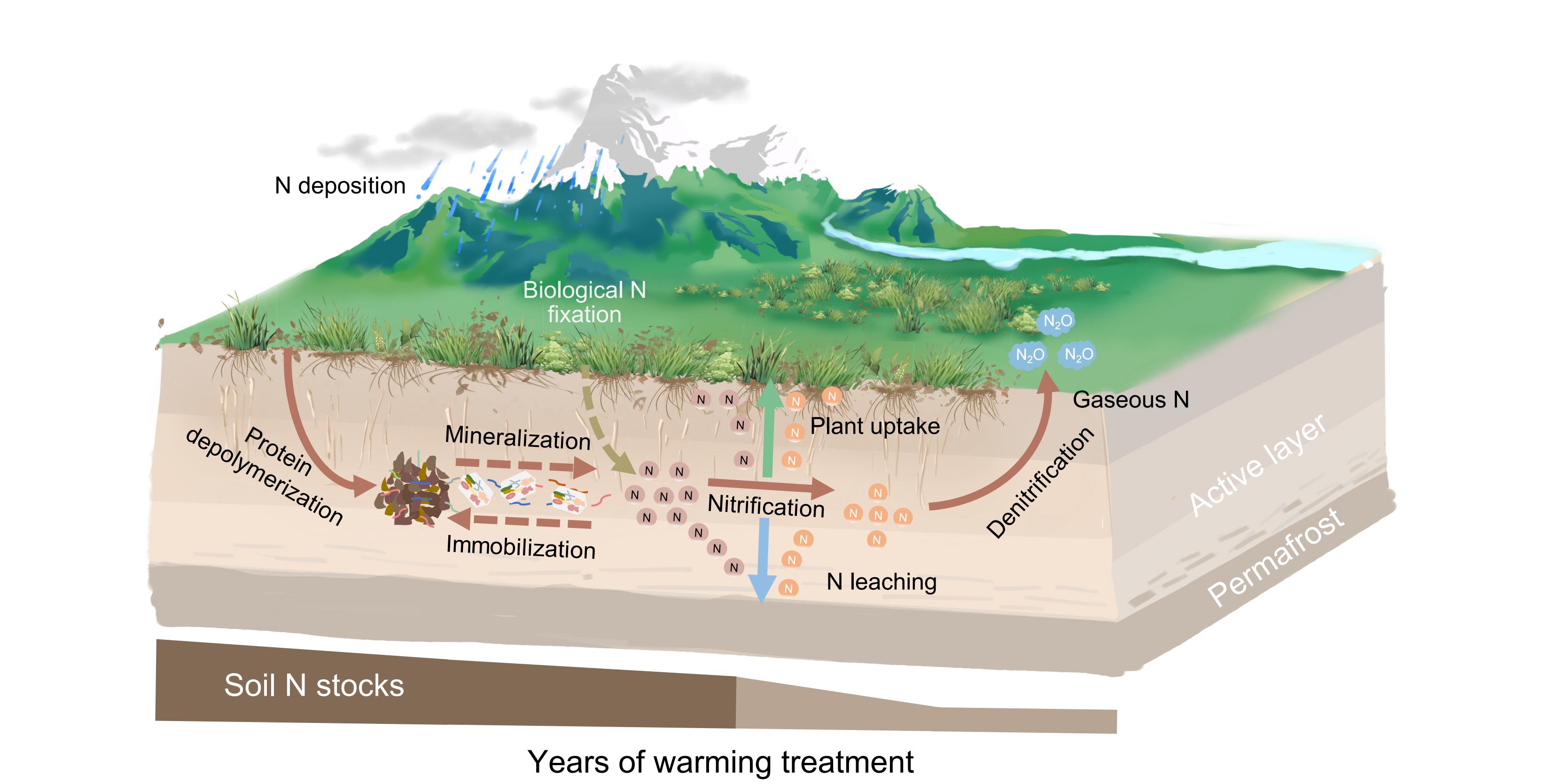A research team led by Prof. YANG Yuanhe from the Institute of Botany of the Chinese Academy of Sciences (IBCAS), in collaboration with partners, highlights that the vulnerability of soil nitrogen (N) stocks with prolonged warming in a Tibetan permafrost ecosystem.
The finding, published in Nature Geoscience, shows the long-term trajectory from a ten-year (2014-2023) field warming experiment in a permafrost ecosystem on the Tibetan Plateau, and the potential mechanisms of warming-induced changes in soil N stocks.
Over a decade of field study, the researcher tracked the long-term trajectory of soil N stocks by repeatedly sampling both N content and the corresponding bulk density in the top 50 cm. Although no change was detected during the first years, eight years of warming ultimately reduced topsoil N stocks by 7.7%.
Researchers also compiled a full ecosystem N inventory by measuring 28 N-cycling variables, including N inputs, microbial N transformations and N losses, and performed a DeNitrification-DeComposition model. They found that the decline in topsoil N stocks could be largely attributed to greater N retention by plants, along with increased N losses through leaching and gaseous emissions. A meta-analysis across permafrost regions of the Northern Hemisphere further confirmed these observations and modelling results.
Together, the findings provide field-based evidence of the vulnerability of soil N stocks upon decadal warming in permafrost regions, suggesting that their feedbacks to climate change may unfold faster than previously assumed.

The effects of decadal warming on soil nitrogen stocks in a permafrost ecosystem on the Tibetan Plateau (Image by WEI Bin)
A research team led by Prof. YANG Yuanhe from the Institute of Botany of the Chinese Academy of Sciences (IBCAS), in collaboration with partners, highlights that the vulnerability of soil nitrogen (N) stocks with prolonged warming in a Tibetan permafrost ecosystem.
The finding, published in Nature Geoscience, shows the long-term trajectory from a ten-year (2014-2023) field warming experiment in a permafrost ecosystem on the Tibetan Plateau, and the potential mechanisms of warming-induced changes in soil N stocks.
Over a decade of field study, the researcher tracked the long-term trajectory of soil N stocks by repeatedly sampling both N content and the corresponding bulk density in the top 50 cm. Although no change was detected during the first years, eight years of warming ultimately reduced topsoil N stocks by 7.7%.
Researchers also compiled a full ecosystem N inventory by measuring 28 N-cycling variables, including N inputs, microbial N transformations and N losses, and performed a DeNitrification-DeComposition model. They found that the decline in topsoil N stocks could be largely attributed to greater N retention by plants, along with increased N losses through leaching and gaseous emissions. A meta-analysis across permafrost regions of the Northern Hemisphere further confirmed these observations and modelling results.
Together, the findings provide field-based evidence of the vulnerability of soil N stocks upon decadal warming in permafrost regions, suggesting that their feedbacks to climate change may unfold faster than previously assumed.

The effects of decadal warming on soil nitrogen stocks in a permafrost ecosystem on the Tibetan Plateau (Image by WEI Bin)
